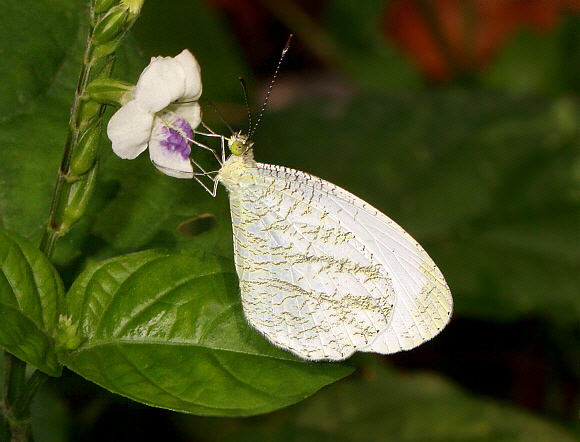
Introduction
There are 8 species in the genus Leptosia, of which 7 are restricted to forested areas of Africa and ( in the case of alcesta and nupta ), Madagascar. There is only one species found outside of Africa, namely nina, which occurs from the Indian subcontinent to the islands of south-east Asia.
Leptosia medusa is found from Sierra Leone to Ghana.
Habitats
This is found in primary and degraded forest, at altitudes between about 100-500m.
Lifecycle
The eggs are spindle-shaped, ribbed, pale green in colour, and laid singly on young terminal leaves of the foodplants.
The caterpillar is green, glaucous and covered in short setae. It feeds on various members of the Capparidaceae.
The chrysalis is shaped like that of Eurema and Gonepteryx. It has a buff or pale brown thorax and abdomen, and pinkish wing cases. It is suspended from the underside of a leaf, attached by the cremaster and secured with a thin silken girdle.
Adult behaviour
Although they are only distantly related, the flight and general behaviour of the butterfly is strongly reminiscent of that of the European Leptidea Wood Whites ( subfamily Dismorphiinae ). The flight is feeble and erratic, but the butterflies spend long periods without settling. Their bodies bob up and down as they slowly flutter low over the grasses, hence the popular name Flip Flop.
They are active mainly in early morning.
Both sexes commonly visit white flowers for nectar.
